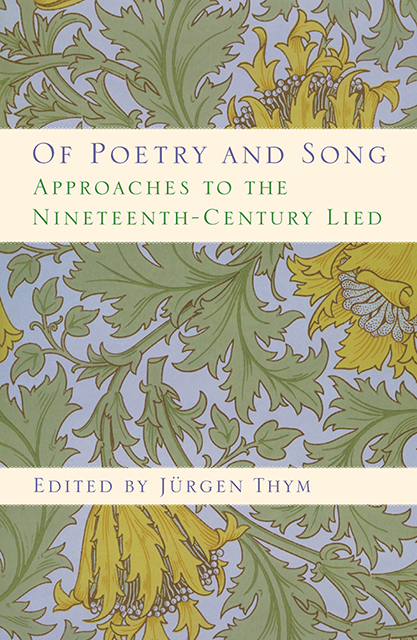Chapter Fourteen - A Cycle in Flux: Schumann’s Eichendorff Liederkreis
Published online by Cambridge University Press: 02 March 2023
Summary
Schumann's Liederkreis, op. 39, is generally considered one of the great song cycles in the history of the German Lied. But what makes it a cycle is less than clear. In fact, some of the principal defining characteristics of song cycles such as Beethoven's An die ferne Geliebte, Schubert's Die schöne Müllerin, and even Schumann's Dichterliebe do not apply here. The poems of op. 39 do not form a lyric cycle, they do not outline a story in the conventional sense, and even if we assume some kind of teleological narrative in the sequence of emotional states displayed in the songs, Schumann complicated or thwarted that pat assumption by replacing, in the second edition of the Liederkreis, the opening song of the cycle with a different one—which, in turn, projects a vastly different emotional trajectory. The ambivalence about how to begin the cycle opens up questions about motivic-thematic recall and key sequence, two aspects various authors— including myself in an earlier study—have identified as contributing to the cyclic coherence on the musical side. Questions upon questions, and no easy answers.
Stage 1: Selecting the Poems
A review of the compositional genesis of the songs later gathered to become the Liederkreis may be of some help in our quest for answers. In the case of text settings, such a review begins appropriately with the selection of the poetry to be set. In 1839 Robert Schumann and Clara Wieck started collecting poems by mostly contemporary poets and entering them into a book titled (in Robert Schumann's handwriting) “Abschriften von Gedichten zur Composition.” Many of these poems, including more than a dozen Eichendorff poems (fig. 14.1), would at some later stage serve as texts to be set to music. Even though both Schumanns added poems to the book well into the early 1850s, the collection was begun as a joint project of two artists who, during their courtship, wanted to be linked by artistic and spiritual bonds when they were physically separated. Schumann set to music the lion's share of the poems gathered in the collection, but Clara contributed a number of Rückert songs, which, together with others by Robert, were published as Liebesfrühling, op. 37, a few years after the couple married.
- Type
- Chapter
- Information
- Of Poetry and SongApproaches to the Nineteenth-Century Lied, pp. 375 - 389Publisher: Boydell & BrewerPrint publication year: 2010



